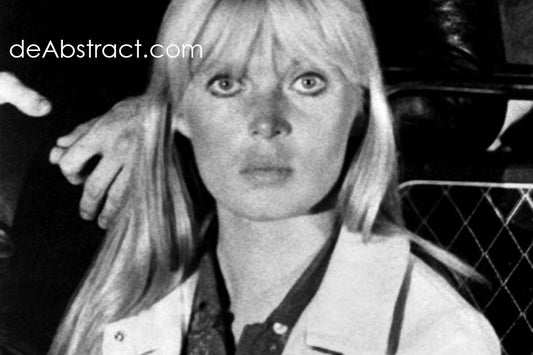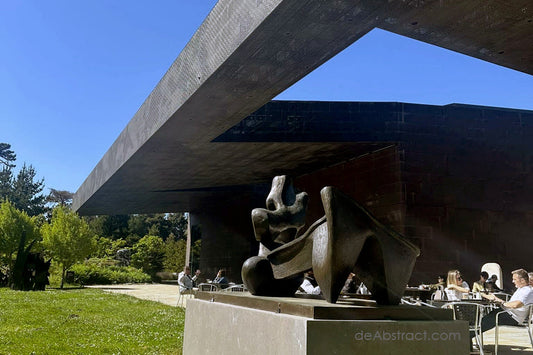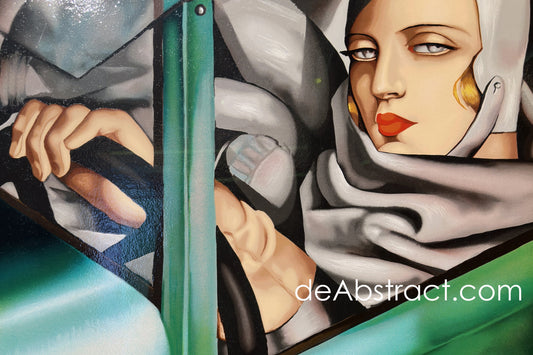
Car Design History at the Petersen Automotive Museum, Los Angeles, California
The bright red building's elevation is covered with aluminum horizontal waves, a surrealistic, massive structure towering up from street level, with dynamic lines that seem to swim through the air. This fantastic, multi-story, three-dimensional form, with a bold personality, dominates the street and its surroundings, inviting everyone to stop and explore its captivating car collection. This is the Petersen Automotive Museum, located in Los Angeles, California.
You could call it a building, but it’s more like a modern creature—an architectural sculpture and a car museum in one. This is a place where you can experience firsthand how car design has evolved and been modernized over the past 100+ years. You can see here many models and brands, and in this post, we want to share a few of them with you:

You can find in this 3-story red and gray building an impressive collection of cars, starting from one of the oldest models - the 1913 Gold Mercer.


One standout example is Porsche—a brand almost everyone recognizes. Its design story began before the Second World War and remains a testament to the best of German engineering and design. This car has long been admired by passionate owners, famous actors, and visionary inventors. Over the years, some have reimagined its form, modifying and reshaping it to reflect their creative vision.

1948 Porsche 356/1 Chassis 001 – Ferry and Ferdinand Porsche certified this car on the road in Austria on June 8, 1948, and it won its class in a race in the City of Innsbruck a month later. “Gmund Roadster” mid-engine prototype chassis 001, with steering, brakes, suspension, transmission, and clutch sourced from the Volkswagen Beetle, which had been designed by Ferry’s father, Ferdinand. The car featured a tubular space frame with aluminum bodywork and is the basis for all Porsches that followed.

1948 Porsche 356 Wooden Buck – The automotive buck was used to create the body of the 356, allowing metalworkers to test-fit the complex panels. A buck speeds up the process of forming the body of 356 and improves accuracy.

1949 Porsche 356/2 Gmund Coupe (engine 1.1-liter flat4; top speed 87 mph; horsepower 40) – Following the prototype 356/1, Porsche completed the first 356/2 production cars (approximately 44 coupes and eight cabriolets) at its facility in Gmund, Austria, before relocating to Germany. The tubular steel frame and mid-mounted engine of the 356/1 were replaced in the production cars with a unitary steel tub and a rear-mounted engine, resulting in a shorter body with a longer rear overhang. Deliveries of the Gmund-built 356/2s began in 1949, and two examples were shown at the Geneva Motor Show in March of that year.

1955 Ghia, Streamline X “Gilda” – Directed by Chrysler’s Virgil Exner to develop a wedge-shaped coupe, Carrozzeria Ghia built this full-scale mockup to display at the 1955 Turin Auto Show. The Gilda – named for a 1946 film noir starring Rita Hayworth – was the work of Ghia’s chief designer, Giovanni Savonuzzi. The mockup had no powerplant but was designed to accommodate a gas turbine engine, which has since been installed. Its aerodynamic silhouette influenced Chrysler’s entire 1955 “Forward Look” styling theme, revolutionizing automotive design at the company. McMinn wrote that the vehicle “looked more like a car of the future than many successive counterparts”.

1956 Porsche 356 Carrera “Kustom Karrera Koupe” (engine 1.6 liter flat-4). Already well known as a pinstriper, Dean Jeffries initially acquired this 356 Carrera in 1957 as a means to expand into car customization while working at Barris Kustoms in Lynwood, California. Almost every part of the car was given the Jeffries touch, including custom front fenders, rear decklid vents, and custom taillights, applying a treatment to a luxury sports car not generally associated with drastic modification. Echoing traditional hot-rod style, the interior of the 356 was upholstered in pleated goat leather. Jeffries would use this car -nicknames the “Kustom Karrera Koupe” – as his daily driver around Hollywood.

1958 “Le Mans Special” (engine 4.6 liter, top speed 170 mph, number built 7 bodies, 4finished in period). In 1957, Road and Track editor John Bond challenged his readers to build an all-American racer that could win the 24 Hours of Le Mans. He designed a simple parallel-box chassis with a body by ArtCenter instructor Strother MacMinn. Specifications included an 88” wheelbase, 189” length, and 46” height, with a front-mounted Corvette V-8 engine and rear-mounted transaxle. Most parts could be sourced from existing American autos. Two teams took up the challenge; one built seven fiberglass bodies and fully completed four cars. This body-only example was restored and finished in 2023.

1964 Porsche 904 Carrera GTS (engine 2.0-liter flat-4, top speed 160 mph, horsepower 180). The Porsche 904 represents the company's return to a full focus on sports car racing after their experiment in Grand Prix with the 804. F. A. “Butzi”. Porsche oversaw engineer Gerhard Schroder, who was designing the chassis. For the first time, fiberglass was used for the body shell that was bonded to a ladder chassis, keeping costs and weight down and creating a stiffer race car. The 904 would be highly successful in FIA racing from its debut in 1963 until 1965 and would herald a new era of Porsche motorsports.

1970 Porsche 914/6 (engine 2.2-liter flat-6, top speed 130 mph, horsepower 225). American, Jeff Zwart, bought his first car, this 1970 Porsche 914/6, using money that he earned and invested during high school. The lightweight and well-balanced 914 was released as an entry-level car for the 1970 model with a 1.7-liter four-cylinder engine. The 914/6 variant was more performance-oriented, with the 110-horsepower, flat-6 engine. After owning the car for nearly two decades, Zwart modified it for rally racing. It features an oil cooler, two ignition systems, a rally clock, and a custom hatch cut between the seats to allow for easy maintenance.

1976 Porsche 911 (930) Turbo Carrera (engine Turbocharged, 3.0 liter flat-6, top speed 155 mph, horsepower 234) was the last new car purchased by the actor and racing driver Steve McQueen. He ordered this car from Bob Smith Porsche in Hollywood with dual mirrors, a sunroof, and a limited-slip differential. McQueen added a few own touches, including a switch on the dashboard that would turn off the tail and brake lights in case he was to be chased by law enforcement.
You can also find in the San Diego Car Museum many other great cars:

- 1932 Ford McGee Roadster

- 1935 Auburn 851 Speedster

- 1937 Delage D8-120 Aerosport Coupe

- 1974 Brubaker Sports Van


- 1925-3Aerodynamic Coupe

- 1988 Porsche 911 Carrera

- 1964 Elva-Porsche MK VII Body Panels

- and - Tesla TZero.

San Diego, California, CAR MUSEUM EXTERIOR ELEVATION - LOOKING UP.




